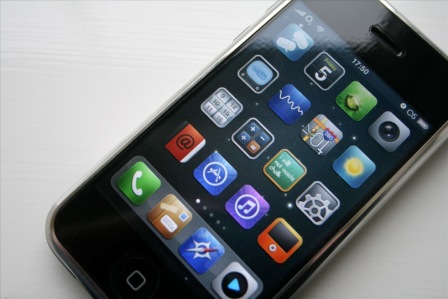Africa’s mobile youths drive change
Cell phones reshape youth cultures
The sight of teenagers selling mushrooms using mobile phones is becoming a familiar one in rural Namibia. Namibia Polytechnic faculty member Maurice Nkusi, designer of a cell phone–based curriculum, told the TechDailyNews that most of these children have never even used a computer. But the rapidity with which they master new technology reflects the era in which they are living.
Cell phones today are nearly ubiquitous in Africa. The World Bank and African Development Bank report there are 650 million mobile users in Africa, surpassing the number in the United States and or Europe. In some African countries more people have access to a mobile phone than to clean water, a bank account or electricity, the agencies add.
The main catalyst for this explosive growth is the youths, Sudanese-born billionaire philanthropist Mohamed “Mo” Ibrahim told Black Money, an online business magazine. The former telecoms tycoon had over 20 million subscribers in Africa when he sold his company, Celtel, for $3.4 billion in 2005.
Mobile technology has been a game changer for Africa. Youths, defined by the United Nations those aged 15 to 24, are seizing the momentum. Teresa Clarke, chief executive officer of Africa.com, a news website, told Black Enterprise magazine that for many Africans “the cell phone is their landline, ATM and email in one device. Cell phones are central to life.” Youths are using mobile phones for everything: communicating, listening to the radio, transferring money, shopping, mingling on social media and more.
Cheap Chinese handsets sell for as little as $20. Countries like Kenya removed their 16% general sales tax in 2009, increasing sales by more than 200%, the Global Mobile Tax Review reports.
Mobile phone penetration in Africa has increased rapidly in the past 12 years, from 1% in 2000 to 54% in 2012, as stated in Deloitte’s report The Sub-Saharan Africa Mobile Observatory. In South Africa, 72% of those between the ages of 15 and 24 have cell phones, according to the UN Children’s Fund, UNICEF.
Subscribers in sub-Saharan Africa pay an average of between $5 and $8 for their monthly cell phone expenses, in a region where, by World Bank estimates, most people live on less than $2 a day. People make huge sacrifices to recharge their phones, even skipping meals.
The Praekelt Foundation, a non-profit organization that uses mobile technology to fight poverty, found that 95% of South African youths use prepaid or “pay-as-you-go” plans, with the remaining 5% being on long-term contracts. About 30 million “please call me” text messages, a free service tailored for low-income cell phone users requesting a call back from the receiver, are sent every day. Phone users are also buying several SIM cards so they can switch between operators and save on interconnection fees.
Internet prices are coming down and speed is up, writes J. M. Ledgard in Intelligent Life magazine, thanks to fibre-optic submarine cables running along the East African coast and connecting several African countries, including South Africa, Mozambique, Madagascar, Tanzania, Kenya, Somalia, Djibouti, Sudan and the Comoros. Other fibre-optic cables run along Africa’s west coast.
There are 84 million Internet-enabled mobiles in Africa today, Ledgard points out. He predicts that by 2014, 69% of mobiles will have Internet access. In response to the burgeoning demand, markets are transitioning slowly from so-called feature phones with limited data access to low-cost smartphones with access to the Internet.
James Akida, a 21-year-old Tanzanian, is able to use his phone to connect with his best friend in the Bronx, in New York City. James spends a large amount of time on Facebook. He uses a text-only version of the site, free, and pays no data fees, an important feature for people like him on a tight budget and using a prepaid service.
Facebook splits costs with the network operators and phone manufacturers. Google is following in its footsteps, providing free Internet access and also eliminating language barriers by becoming multilingual.
Face-to-conversations are out, texting is in. Hangouts are no longer the craze for youths. Texting or SMS (short message service) has overtaken speaking on a mobile phone. Even when young people are physically in the same space, as 19-year-old college student Naomi Kaneza from Rwanda told Africa Renewal, they will secretly text each other. Even during social events like weddings, funerals and religious services, it’s typical to see teens and young adults hunched over, peering into a small screen, thumb and forefinger poised ready to fly over the tiny keyboard to send a text message.
The mobile market in Africa has great potential for investors because of the huge numbers. Facebook boasted 38 million users in Africa in 2011, prompting giants like Google and Microsoft to take notice. Microsoft launched YouthSpark in February with the aim of bringing one million small and medium-size African enterprises online by absorbing the existing young workforce.
Mobile technology is also putting a dent in Africa’s youth unemployment rate. In both urban and rural areas, young people are often managing the mobile phone kiosks that offer a variety of services, from selling airtime to making repairs to unlocking phones to charging them.
In Kenya the economic impact of mobile telephony has been huge. The Global Mobile Tax Review and Deloitte show that in 2011 the industry contributed about $3.6 billion to the country’s gross domestic product. It has also made a significant contribution to employment, with an estimated 280,000 points of sale for mobile services in 2011, including kiosks and dukas, which are phone and electrical goods stores.
M-Pesa, the mobile phone–based money transfer service launched by Kenya’s mobile network operator Safaricom, is perhaps the most successful and lucrative digital innovation in Africa so far. In the last month of 2011 it was able to move $1.35 billion, writes Kenya’s Business Daily using data from the Central Bank of Kenya.
Building on that model, young African software developers are seeking solutions to everyday problems. Some of them are even developing software apps themselves, like Christine Ampaire of Uganda, who made the newspaper East African’s list of Top 20 Young Innovators to Watch. After the success of her app Mafuta Go, which helps users find the nearest petrol station with the cheapest prices, she is developing an SMS-based app for taxi motorcycle riders in the capital city, Kampala, whose phones do not have access to the Internet.
Mobile apps could just become a game changer for Africa’s development, concludes East African.
By Jocelyne Sambira, Africa Renewal
Stay with Sierra Express Media, for your trusted place in news!
© 2013, https:. All rights reserved.






